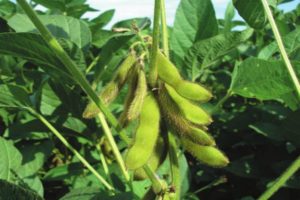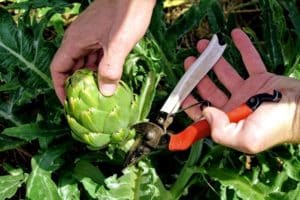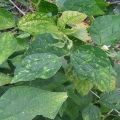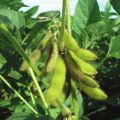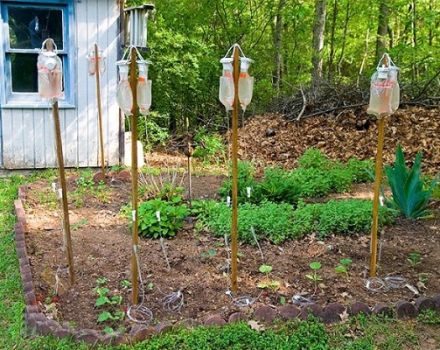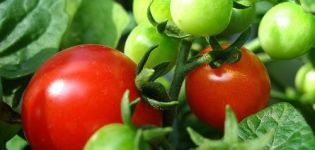How to properly grow soybeans in the garden, especially care and fertilization, harvesting and storing crops
Sow legumes when the soil warms up well, and do not forget about abundant watering of AO during flowering. Soy is an important crop for its ability to provide vegetable protein and oil. Moreover, it has good profitability. No special conditions are required for growing soybeans. Therefore, summer residents often began to plant it on their personal plots.
Description of the plant
Soy is a thermophilic plant. It needs warm days and nights without frost for its good growth. The plant gives the most active growth at daytime temperatures of +32 degrees and at night + 22 degrees. The length of daylight hours should be 12 hours. High-yielding culture.
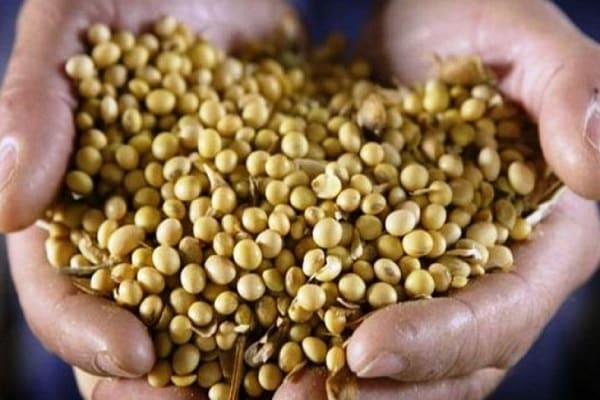
The average plant height is 0.6-1 meter. It has trifoliate leaves, which fall off after the culture ripens. Soybeans bloom with small flowers, collected in inflorescences - brushes, attracts insects weakly due to the absence of a bright smell. The length of the fruits does not exceed 6 cm, they contain a maximum of 4 beans, usually 2-3. The seeds are greenish or yellow in color.
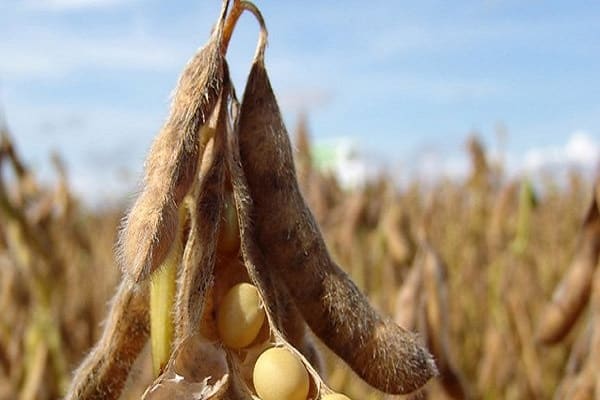
Soybean Growing Tips
This plant is relatively "new" in the gardens of our citizens. Not everyone has experience in growing this crop in gardens. Experts offer several tips to help you get a high-quality and bountiful harvest.
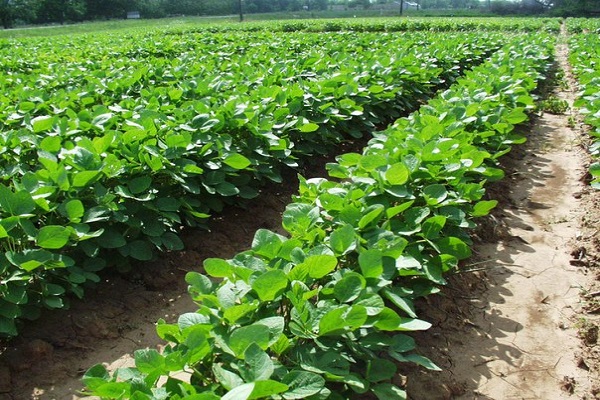
- Soybeans can be grown in areas where grain crops and corn were previously grown, and can be sown after potatoes and beets. But after cabbage or other representatives of legumes, it is better not to sow soybeans. And after sunflower, too, because these plants can cause the active spread of bacteriosis in the soil.
- Having grown soybeans, next year at the same place you can get a good harvest of wheat, rapeseed, vegetable crops.
- Two years in a row, soybeans cannot be sown in the same field, as it significantly impoverishes the land.
- Prepare the soil in advance. In the selected area, fertilization is required to be applied to a depth of 20-30 cm in the fall. In the spring, the field is harrowed. It should be even, without grooves and tubercles with a height difference of more than 4 cm. After all, soybeans have rather low beans, and it will be difficult to harvest them.
- It is necessary to prepare for sowing not only the earth, but also the seeds. The peculiarity of the preparation lies in the fact that the planting material in ordinary home conditions should be etched, and then treated with rhizotorfin, so that nodule microorganisms develop actively. The solution consumption is from 70 to 80 liters for each ton of seeds. Sometimes, instead of treating seeds with rhizotorfin, ammonium nitrate is used for application to the soil. This method is more expensive, but significantly increases the yield.
- Do not sow soybean seeds with pneumatic drills.
- It is important to water and fertilize plants in a timely manner, especially with compounds of molybdenum, sulfur, cobalt.
- So that the yield does not decrease, the varieties grown on the site should be periodically changed and the seed should be renewed, and crop rotation should be applied.
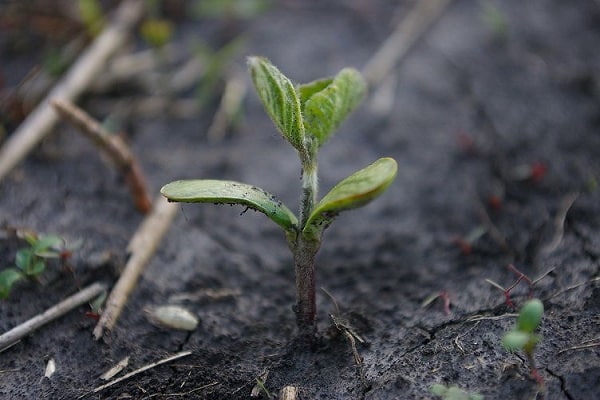
Planting soybeans in the open field
Sow legumes when the soil warms up well - up to 10 degrees to a depth of 5 cm and the threat of night frosts disappears. This is the planting depth of the seeds. It is better to wait until the soil warms up to 12-14 degrees. Therefore, soybeans are sown more often in late April or early May. At the same time, there must be a sufficient amount of moisture in the ground.
Under favorable conditions, seedlings will appear in a week. If you sow a legume crop earlier, then it will sprout late, it will be susceptible to various diseases, and the stem will be excessively stretched.
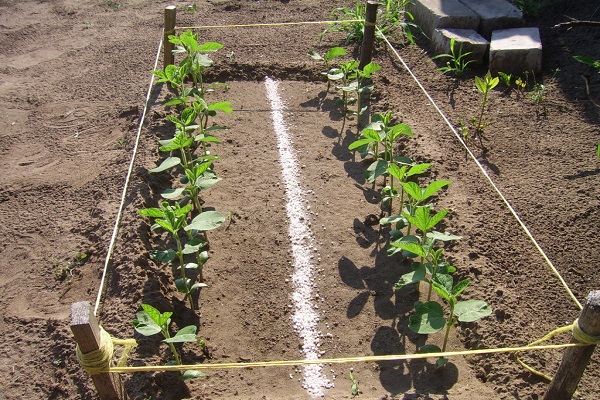
All dicotyledonous crops are very demanding in terms of planting depth. The beans cannot be buried more than 3-5 cm. If the sowing is done deeper, then the plant will not rise at all. The distance between the rows is left at 40-60 cm. About 40 seeds are sown for each meter.
The moisture content in the soil is of decisive importance, it must be kept with various agrotechnical methods. For example, loosen the soil only slightly so that it does not dry out. It is beneficial when a layer of plant residues is preserved on the soil.
For soybeans, soil acidity is important; it prefers neutral or slightly acidic soils. The best option is 6.2 ... 8. At lower pH values, the plant is not cultivated.
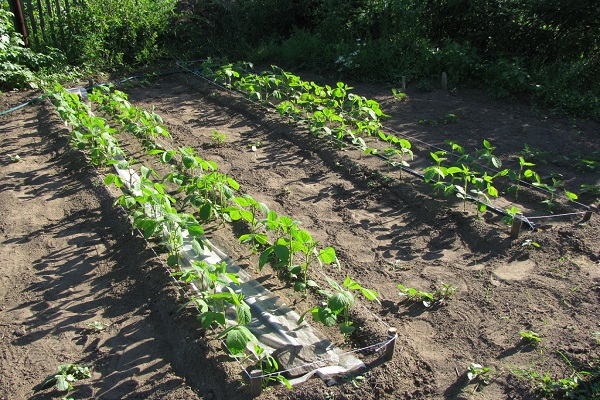
Features of soybean care
The culture is demanding in terms of ambient temperature and lighting. If there is not enough sunlight for the plant, then it greatly lengthens the stems, the cuttings of the leaves also become long, as a result, the ovary is poorly formed, it falls off prematurely.
Most of all, this leguminous plant is demanding for heat during the period when it actively blooms and forms fruits. At temperatures below 14 degrees, soybeans stop growing.
It is important to weed plants in a timely manner, remove weeds, and loosen the soil between the rows. Harrowing is done several times. The first time is 4 days after sowing, then when the plant reaches a height of 15 cm, the third time - when the third leaves are formed. Treat the space between the rows to remove weeds as soon as they appear. During the growing season, they can be from 2 to 5. Without additional irrigation and fertilization, soybean will not give a high yield.
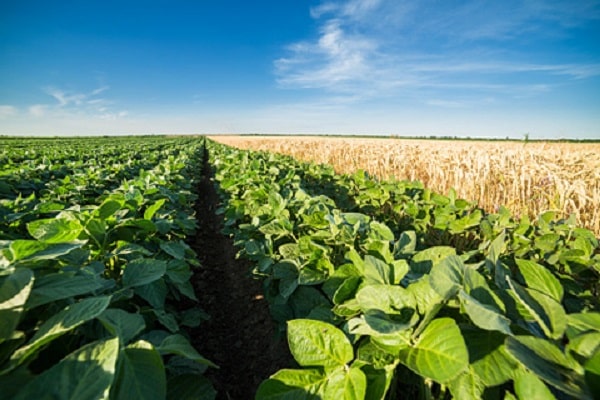
Soybean fertilization
For this legume crop, it is very important to have a sufficient content of trace elements in the soil. This primarily concerns molybdenum and boron. This is due to the fact that the development of nitrogen-fixing bacteria that live on the roots of a culture is directly dependent on these elements. Nodule microorganisms fix nitrogen from the air, enriching the soil with it. Foliar feeding with these substances has a positive effect on the growth of the culture, especially in the initial stages.
Leaf processing provides chlorophyll synthesis. If it is not carried out, then the soybean will be of an uncharacteristic color: light green and even yellow.
For top dressing, nitrogen fertilizers are used at the rate of 10-20 kg per hectare of soil, as well as phosphorus (15-30 kg) and potash (25-60 kg). During the period of active growth make urea (for fertilization the leaves will require 50 grams of composition per bucket of water), nitrophoska, UAN. Before sowing, saltpeter or ammonium sulfate is added to the soil where soybeans will grow.
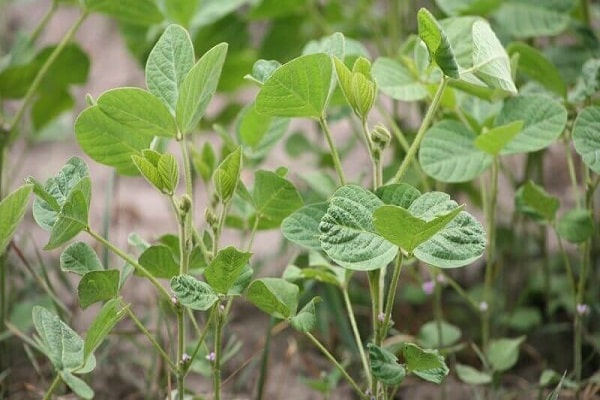
How to tie?
Large bushes are tied to stakes about a meter high. For this purpose, you can use any branches, with the exception of willow. She quickly takes root. Also, metal rods are often used. It is recommended to use plastic cords or soft cloth strips for the garter.
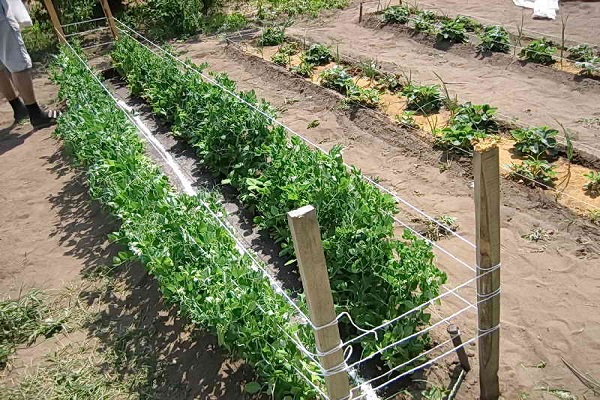
Soybean watering rules
Another factor that is important for a legume plant is the amount of water and humidity in the air. Before the flowers appear, soybeans can still tolerate dry periods, but this reduces yields, because the lower beans will not develop well.
When the beds are abundantly covered with flowers and grains begin to tie, then the plant needs a sufficient amount of moisture, otherwise you will have to forget about the harvest. Also during this growing season, moist air is desirable for soybeans. Therefore, watering should be frequent and abundant. In arid conditions, the culture simply sheds flowers, the first formed ovary and does not form a new one.

It is better to water the legumes with warm water, and then, so that moisture does not evaporate, the soil is mulched with peat or straw.
How to process soybeans?
To protect soybean crops from an abundance of weeds, it is necessary to carry out herbicide treatment in a timely manner. Harnes is most often used, which is applied at the rate of 2 liters per hectare of land. Sprouts tolerate herbicides well in the growth phase from the first trefoil to the beginning of the third trefoil formation. The deadline for weed control is for the fifth leaf level to appear, before bud formation begins. Later, the treatment of crops with herbicides is very harmful to her.
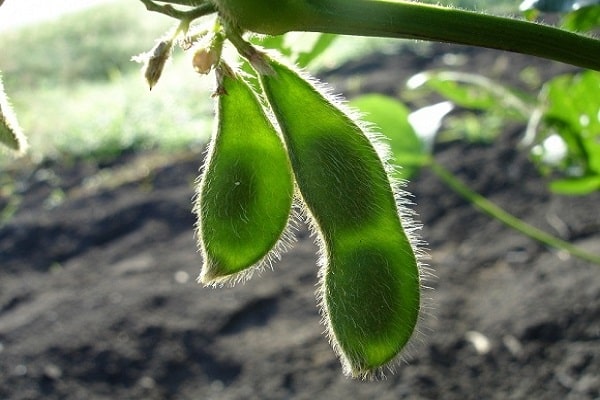
The plant's immunity is rather weak, therefore it is very important for it to control the presence of the first signs of the disease. Of the pests, this culture loves to inhabit aphids, as well as a spider mite. From folk methods, they practice processing with decoctions of bitter wormwood, hot pepper. If the growing season occurs at excessive humidity and at the same time low temperatures, then the plant may suffer from powdery mildew.
Then they are sprayed with preparations based on copper, for example, copper sulfate. All damaged parts of the plant must be removed and burned. For prophylaxis, it is better to treat with Imazamox, Imazetapir or Bentazon preparations, when the first 5-7 leaves already appear on the seedlings.
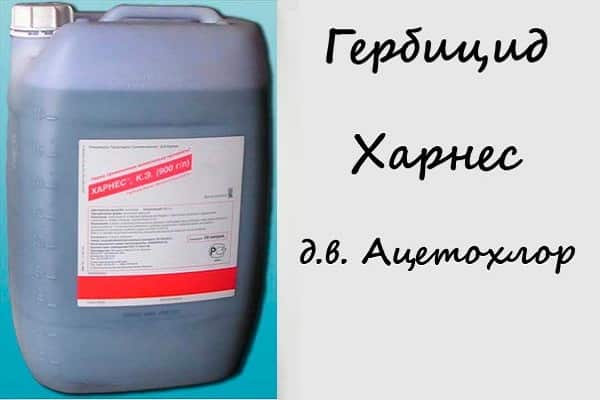
How to harvest soybeans?
Early legume varieties ripen already at 85 days, while late varieties will take 245 days. Also, the harvesting period depends on the climatic characteristics of the cultivation, the region. Therefore, soybeans are harvested from late July to late September.
The main factor signaling that it is time to harvest is the plant's shedding of leaves. The beans will turn gray by this time. They need to be harvested quite quickly, in 3-4 days, otherwise they themselves will begin to open, the harvest will be lost. In the fields, soybeans are harvested with the help of combines, in small beds they are mowed and threshed. After collecting the beans, the stems of the plants are removed from the field, and the leaves are simply dug up.
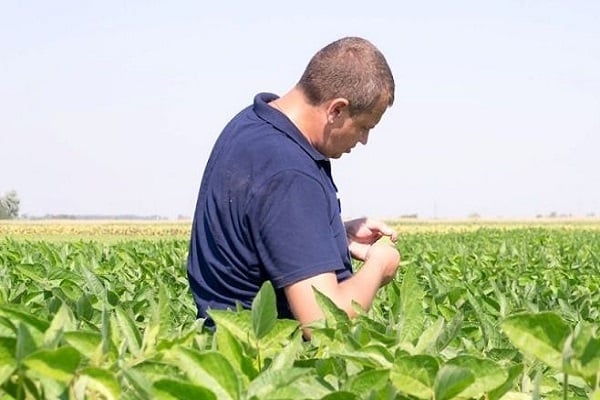
Before you start threshing the beans, it is best to keep them in the sun so that they open up from the sunlight.
If the harvesting period coincided with the rainy season, then the plant is pulled out from small areas along with the roots and hung to dry indoors. The beans will ripen in this state.

